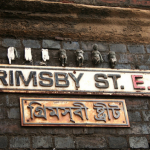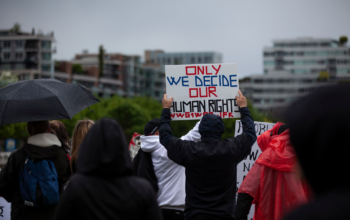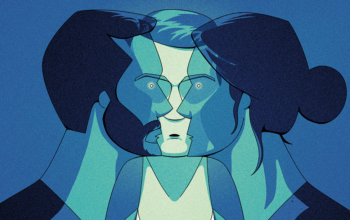Abolitionists, in the 18th century US, proclaiming slaves as equal human beings. In 2016, a nurse distributing blankets to people freezing in a crowded gymnasium after an earthquake in Italy. Students, who set up a table in front of the Orkanen library at Malmo University, promoting animal rights.
What do those scenarios have in common? Each of them is representing a different facet of humanitarianism, a big word the meaning of which varies its tone in different languages.
The Finnish word humanismi describes benevolent acts of humans towards other humans – recognising them as individuals with needs and rights (in more radical readings there is no differences between humans and animals). The English term conjures up reforms and changing structures for the better rather than individual acts of kindness. The German word humanitarismus has rather negative connotations: a benevolence that is patronising and disempowering, serving the conscience of the benefactor more than the beneficiary and thereby glossing over and sustaining inequality.
These divergent meanings of humanitarianism are harbouring contradictions that lie at the heart of the moral dilemma that development aid is facing, even though this aspect is often overlooked.
Despite all reforms and critical rethinking of development aid, the humanitarian thought remains at the heart of development aid. The advertisements and public statements of the donor NGOs and state agencies (including the main sponsor of this issue, The Swedish Development Agency [SIDA]) are nurturing the image of benevolent, selfless help. The humanitarian tale is not only motivating individuals to donate to these institutions but also justifies everything that is done in the name of humanity. Volunteer services give young people the chance to be part of the kindness, to experience what it feels like to do good to others, which are obviously far away.
This is a problem, because the humanitarian ambition has made us blind to the inhuman, profit-oriented face of development in the past. While the actual effects of development projects are discussed very critically in academic and activist circles, the good intentions behind the idea of development are rarely questioned. Humanitarianism embodies these good intentions. Humanitarian motivations for development aid are often defended as being essentially great, but unfortunately extremely difficult to translate them into practice.
In this article I want to challenge this view and argue that the idea of humanitarianism, in all its diversity and complexity, has several inherent problems in relation to development aid that go beyond a tension between theory and praxis.
First of all, humanitarianism assumes universal values of what is good and what is desirable. Helping always implies that someone is in a negative situation and needs someone else’s assistance to change things for the better. But who defines what is bad and what needs to be changed?
That leads to the second point, where one person is the benefactor and the other is the beneficiary. That is completely fine, when the roles are situational and can be reversed. In connection with development aid however, this is hardly ever the case because of unequal global power structures.
Secondly, the humanitarian narrative in development aid has contributed to stereotypes which portray Western, white people as striving forward, knowledgeable and powerful and therefore in a position to grand help to others. People from the Global South and especially people of colour have in contrast been represented as poor, hungry, timeless and essentially unable to help themselves. Especially the advertisements that are supposed to attract donations in the Global North have been criticised by organisations of people of colour in this regard. While the humanitarian narrative is pleasant for donors, it continues to disempower the beneficiaries.
Thirdly, the humanitarian thought has a dreadful colonial legacy. Immanuel Wallerstein, in his book on European Universalism explains very well the connections between humanitarian agendas of early Spanish colonists and Western humanitarian aid workers today. The Spaniards understood their colonial encounter with the native Americans, which resulted in – as benevolent acts of kindness – Christianising and thereby humanising the poor wild Indians. A few hundred years later, English and French imperialists saw it as “The White Man’s Burden” to give the great gift of civilisation to the barbarian inhabitants of Africa and Asia. And what about today? The new gifts that westerners bring are named democracy and human rights, but are they any different? What is behind the good humanitarian ideals and who is profiting and losing due to development aid? Despite these inherent problems, I believe that humanitarianism can be transformed into a powerful motivator when applied with care and concern for unequal power structures.
It is essential to move on from one sided help towards an equal cooperation between people. On the level of development, this simple vision is however difficult to realise,because development cooperation takes place in larger unequal structures. Asymmetrical North-South power relations are affecting decision-making processes and funding structures. As a first step, it would be necessary to acknowledge this unbalance, drop the euphemistic discourse of benevolent help and open the eyes to negative effects on beneficiaries. As a next step, perspectives from the Global South should be incorporated and valued when defining what the problem is that requires help, what this help should look like and where it should come from.
It is much easier to move to a less patronising humanitarianism on a micro-level. A good example from the context of Malmö is the people’s kitchen in Kontrapunkt. This project does not follow the usual model of a group of well-situated people cooking for the poor and homeless, which is a prime example for old-school humanitarianism. Instead, everyone is invited to join the cooking team and everyone is invited to eat and share the food afterwards. The people’s kitchen recognises every human equally as an individual with the capacity to contribute as well as needs, that can be cared for by the community. That is a humanitarianism to strive for.
Emilia Henkel








